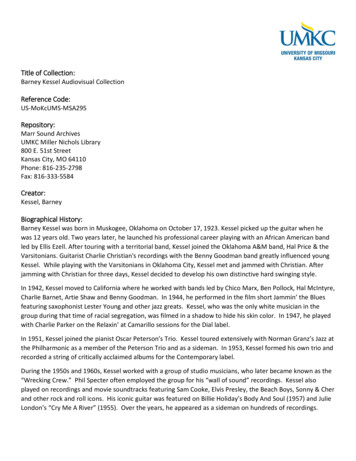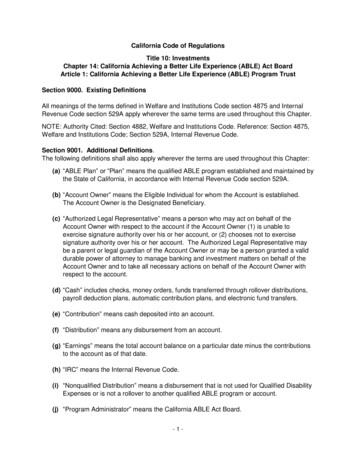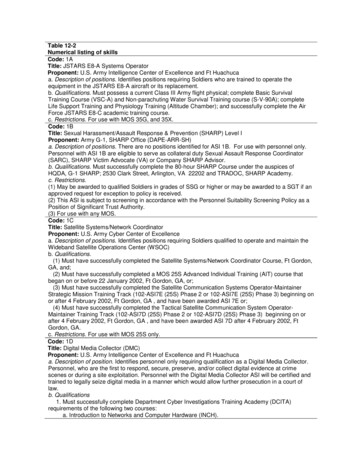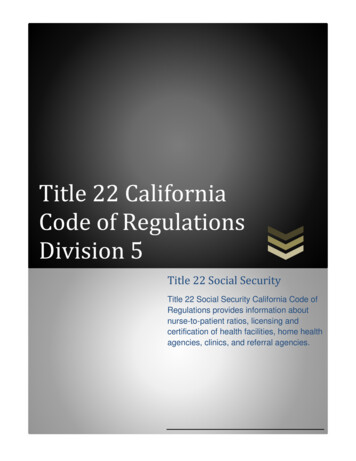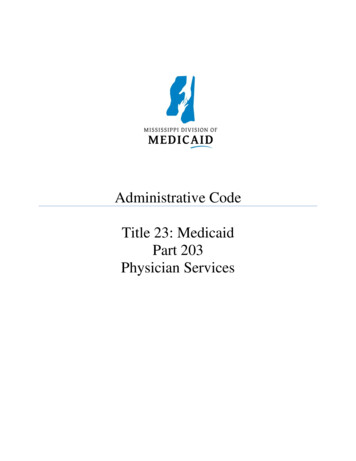
Transcription
Title 23: MedicaidAdministrative CodeTitle 23: MedicaidPart 203Physician ServicesTable of Contents
Table of ContentsTitle 23: Medicaid . 1Table of Contents . 1Title 23: Division of Medicaid . 1Part 203: Physician Services . 1Part 203 Chapter 1: General . 1Rule 1.1: Provider Enrollment Requirements for Physicians, Osteopaths, Chiropractors,Podiatrists . 1Rule 1.2: Physician Fees . 1Rule 1.3: Medical Visit Editing. 1Rule 1.4: Physician Office Visits . 2Rule 1.5: Hospital Inpatient Visits/ Consultations . 3Rule 1.6: Locum Tenens/Reciprocal Billing Arrangements . 3Rule 1.7: Teaching Facilities’ Billing for Resident Services . 5Rule 1.8: Casting, Splinting, or Strapping in Office Setting . 5Rule 1.9: Removal of Impacted Cerumen . 6Rule 1.10: Early and Periodic Screening, Diagnosis, and Treatment (EPSDT) . 6Part 203 Chapter 2: Physician-Administered Drugs and Implantable Drug System Devices 6Rule 2.1: Covered Services . 6Rule 2.2: Drug Rebates . 6Rule 2.3: [Refer to Miss. Admin. Code Part 203, Rule 2.1] . 9Rule 2.4: [Refer to Miss. Admin. Code Part 203, Rule 2.1] . 9Rule 2.5: [Refer to Miss. Admin. Code Part 203, Rule 2.1] . 9Rule 2.6: [Refer to Miss. Admin. Code Part 203, Rule 2.1] . 9Rule 2.7: Early and Periodic Screening, Diagnosis, and Treatment (EPSDT) . 9Part 203 Chapter 3: Anesthesia . 10
Rule 3.1: Provider Enrollment . 10Rule 3.2: Covered Services . 10Rule 3.3: Criteria for Medical Direction of Resident . 11Rule 3.4: Billing for Procedures . 12Rule 3.5: Early and Periodic Screening, Diagnosis, and Treatment (EPSDT) . 12Part 203 Chapter 4: Surgery . 12Rule 4.1: Definitions . 12Rule 4.2: Assistant Surgeon . 13Rule 4.3: Co-Surgeons . 14Rule 4.4: Team Surgeons . 15Rule 4.5: Multiple Surgeries . 15Rule 4.6: Bilateral Procedures . 17Rule 4.7: Surgical Modifiers . 17Rule 4.8: Endoscopic Procedures . 17Rule 4.9: Post-Operative Pain Management . 18Rule 4.10: Abdominal Panniculectomy . 19Rule 4.11: Blepharoplasty . 20Rule 4.12: Circumcisions . 23Rule 4.13: [Refer to Miss. Admin. Code Part 203, Rule 2.1] . 24Rule 4.14: [Refer to Miss. Admin. Code Part 203, Rule 2.1] . 24Rule 4.15: Keloids . 24Rule 4.16: Male Gynecomastia . 25Rule 4.17: Otoplasty. 26Rule 4.18: Reduction Mammoplasty. 27Rule 4.19: Skin Tag Removal . 28Rule 4.20: Uvulopalatopharyngoplasty (UPPP/UP3) . 29Rule 4.21: Ventricular Assist Devices (VAD) . 30
Rule 4.22: Early and Periodic Screening, Diagnosis, and Treatment (EPSDT) . 31Rule 4.23: Gastric Electrical Stimulation (GES) . 31Part 203 Chapter 5: Chiropractor . 32Rule 5.1: Covered Services . 32Rule 5.2: Reimbursement . 32Rule 5.3: Coverage Criteria. 32Rule 5.4: Dual Eligibles . 33Rule 5.5: Documentation Requirements . 34Rule 5.6: Early and Periodic Screening, Diagnosis, and Treatment (EPSDT) . 34Part 203 Chapter 6: Podiatry . 35Rule 6.1: Covered Services . 35Rule 6.2: Non-covered services . 36Rule 6.3: Anesthesia. 38Rule 6.4: Documentation. 38Rule 6.5: Early and Periodic Screening, Diagnosis, and Treatment (EPSDT) . 39Part 203 Chapter 7: Nurse Practitioner. 40Rule 7.1: Provider Enrollment . 40Rule 7.2: Nurse Practitioner Services . 40Rule 7.3: Early and Periodic Screening, Diagnosis, and Treatment (EPSDT) . 41Part 203 Chapter 8: Physician Assistant . 41Rule 8.1: Physician Assistant Enrollment Requirements . 41Rule 8.2: Physician Assistant Reimbursement . 42Rule 8.3: Early and Periodic Screening, Diagnosis, and Treatment (EPSDT) . 43Part 203 Chapter 9: Psychiatric Services . 43Rule 9.1: Provider Qualifications . 43Rule 9.2: General Requirements . 43Rule 9.3: Covered Services . 43
Rule 9.4: Non-Covered Services . 44Rule 9.5: Service Limits . 44Rule 9.6: Documentation. 45Rule 9.7: Early and Periodic Screening, Diagnosis, and Treatment (EPSDT) . 47Part 203: Chapter 10: Implantable Medical Devices . 48Rule 10.1: Skin and Soft Tissue Substitutes . 48
Title 23: Division of MedicaidPart 203: Physician ServicesPart 203 Chapter 1: GeneralRule 1.1: Provider Enrollment Requirements for Physicians, Osteopaths, Chiropractors,PodiatristsPhysician providers may participate in the Medicaid program upon compliance with providerenrollment requirements outlined in Part 200, Chapter 4, Rule 4.8 in addition to the specificprovider type requirements listed below. Physicians, osteopaths, chiropractors and podiatristsmust also meet the specific requirements as follow:A. National Provider Identifier (NPI), verification from National Plan and Provider EnumerationSystem (NPPES)B. Copy of licensure card or letter from the appropriate board stating current certification andmust be from state of servicing location.C. Verification of social security number using a social security card, driver’s license if it notesthe social security number, military ID or a notarized statement signed by the provider notingthe social security number. The name noted on verification must match the name noted onthe W-9.D. CLIA certificate and completed Certification form, if applicableE. Copy of specialty certificate(s), if applicableSource: Miss. Code Ann. § 43-13-121Rule 1.2: Physician FeesEffective for dates of services on and after June 1, 2005, and as authorized in House Bill 1104during the 2005 Legislative Session, Medicaid covers physicians’ services at ninety percent(90%) of the rate established on January 1, 1999 and as may be adjusted each July thereafter,under Medicare (Title XVIII of the federal Social Security Act, as amended).Source: Miss. Code Ann. § 43-13-121: 43-13-117Rule 1.3: Medical Visit EditingMedicaid does not provide separate reimbursement for most Evaluation and Management(E&M) services when a substantial diagnostic or therapeutic procedure is performed.Source: Miss. Code Ann. § 43-13-1211
Rule 1.4: Physician Office VisitsA. The Division of Medicaid covers a combined total of sixteen (16) non-psychiatric physicianoffice and hospital outpatient department visits per state fiscal year whether occurring duringor after office hours or provider established office hours. [Refer to Miss. Admin. Code, Part200, Rule 9.5 for psychiatric physician office and hospital outpatient department visits.]B. The Division of Medicaid:1. Defines regularly scheduled office hours as the hours between 8:00 a.m. and 5:00 p.m.,Monday through Friday, excluding Saturday, Sunday and federal and state holidays,referred to in Rule 1.4 as “office hours”.2. Permits providers to set regularly scheduled office hours outside of the Division ofMedicaid’s definition of office hours, referred to in Rule 1.4 as “provider establishedoffice hours”.3. Requires providers to maintain records indicating the provider’s established office hoursand any changes including:a) The date of the change,b) The provider established office hours prior to the change, andc) The new provider established office hours.C. The Division of Medicaid reimburses a fee in addition to the appropriate Evaluation andManagement (E&M) code for a physician office visit when the visit:1. Occurs during the provider established office hours which are set outside of the Divisionof Medicaid’s definition of office hours, or2. Occurs outside of office hours or provider established office hours only for a conditionwhich is not life-threatening but warrants immediate attention and cannot wait to betreated until the next scheduled appointment during office hours or provider establishedoffice hours.D. The Division of Medicaid reimburses only the appropriate E&M code for a physician officevisit scheduled during office hours or provider established office hours but not occurringuntil after office hours or provider established office hours.Source: 42 C.F.R. § 440.230; Miss. Code Ann. § 43-13-117, 43-13-121.History: Revised to correspond with SPA 18-0020 (eff. 01/01/2019) eff. 06/01/2019; RemovedMiss. Admin. Code Part 203, Rule 1.4.E. with the approval of SPA 2013-032 on08/08/2014, and SPA 2013-033 on 08/05/2014, eff. 06/01/2015.2
Rule 1.5: Hospital Inpatient Visits/ ConsultationsA. An initial hospital visit for the beneficiary’s attending physician is covered. A subsequenthospital visit is not covered on the same day as the initial visit.B. Following the date of admission, only one subsequent hospital visit per day is allowed to theattending physician. An exception is made when the patient is in an Intensive Care Unit(ICU) or Coronary Care Unit (CCU) where the limit is two (2) visits per day.C. An initial inpatient consultation is covered for each consultant of a different specialty if thepatient’s condition justifies the medical necessity for multiple consultations. Only one (1)initial consultation is allowed per beneficiary, per consultant, per admission.D. Following the date of the initial inpatient consultation, one (1) subsequent hospital visit perday is allowed to only one (1) consulting physician if the patient’s condition justifies themedical necessity for the services of more than one (1) physician of a specialty different fromthe attending physician.E. A subsequent hospital visit and a hospital discharge visit on the same date of service are notboth covered; only the hospital discharge visit is a covered service.Source: Miss. Code Ann. § 43-13-121Rule 1.6: Locum Tenens/Reciprocal Billing ArrangementsA. Locum Tenens: For purposes of this rule a “locum tenens” arrangement is defined when theregular physician retains a substitute physician to take over the practice during an absence. Aregular physician is the physician that is normally scheduled to see a patient. The regularphysician usually pays the substitute physician a fixed amount per diem, with the substitutephysician being an independent contractor rather than an employee.B. Reimbursement shall be made to the patient’s regular physician for covered services of alocum tenens physician who is not an employee of the regular physician and whose servicesfor patients of the regular physician are not restricted to the regular physician’s offices whenall the following criteria are met:1. The regular physician is unavailable to provide the services,2. The regular physician pays the locum tenens for the services on a per diem or similar feefor-time basis,3. The Medicaid beneficiary has arranged or sought to receive services from the regularphysician,4. The substitute physician does not provide the services to the Medicaid beneficiary over a3
continuous period of longer than sixty (60) days,5. The locum tenens physician is an enrolled Mississippi Medicaid provider with a validMississippi Medicaid provider number,6. The regular physician identifies the services as substitute physician services,7. The claim is billed with the National Provider Identifier (NPI) of the regular physician,8. The regular physician keeps on file a record of each service provided by the substitutephysician, and9. The regular physician ensures that the locum tenens physician is properly licensed topractice medicine in the state of Mississippi; or, if the regular physician practices inanother state, the state in which the regular physician is licensed to practice.C. Reciprocal Billing Arrangement: Medicaid defines reciprocal billing arrangement when aregular physician or group has a substitute physician provide covered services to a Medicaidbeneficiary on an occasional reciprocal basis. A physician can have reciprocal arrangementswith more than one physician. The arrangements need not be in writing.1. Medicaid covers reciprocal billing arrangements when the regular physician arranges tobe provided by a substitute physician on an occasional reciprocal basis if all the followingcriteria are met:a) The regular physician is unavailable to provide the services,b) A reciprocal billing arrangement is typically an agreement among physicians that onewill cover the other’s practice when the regular physician is absent. Physicians canhave reciprocal arrangements with more than one physician,c) The Medicaid beneficiary has arranged or sought services from the regular physician,d) The substitute physician does not provide the services to a Medicaid beneficiary overa continuous period of longer than sixty (60) days,e) The substitute physician is an enrolled Mississippi Medicaid provider with a validMississippi Medicaid provider number,f) The regular physician identifies the services as substitute physician on the appropriateclaim form,g) The regular physician keeps on file a record of each service provided by the substitutephysician, associated with the substitute physician’s National Provider Identifier(NPI), and4
h) The regular physician ensures that the substitute physician is properly licensed topractice medicine in the state of Mississippi; or, if the regular physician practices inanother state, the state in which the regular physician is licensed to practice.2. Medicaid does not cover reciprocal services for substitution arrangements amongphysicians in the same medical group except when a group member provides services onbehalf of another group member who is the designated attending physician for a hospicepatient.D. Covered Visit Service - Medicaid covers the submission of claims for a medical group underreciprocal billing arrangements for the covered visit services of a substitute physician who isnot a member of the group. Medicaid defines a continuous period of covered visit servicesthat begins with the first day on which the substitute physician provides covered visitservices to patients of the regular physician, and it ends with the last day on which thesubstitute physician provides these services to these patients before the regular physicianreturns to work. This period continues without interruption on days on which no coveredvisit services are provided to patients on behalf of the regular physician or are furnished bysome other substitute physician on behalf of the regular physician. A new period of coveredvisit services can begin after the regular physician has returned to work.Source: Miss. Code Ann.
A. Locum Tenens: For purposes of this rule a “locum tenens” arrangement is defined when the regular physician retains a substitute physician to take over the practice during an absence. A regular physician is the physician
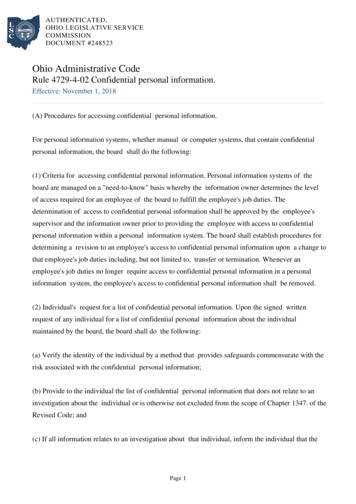
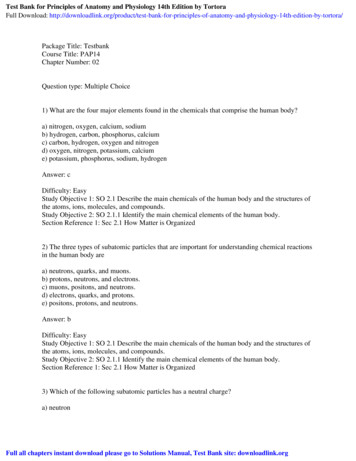


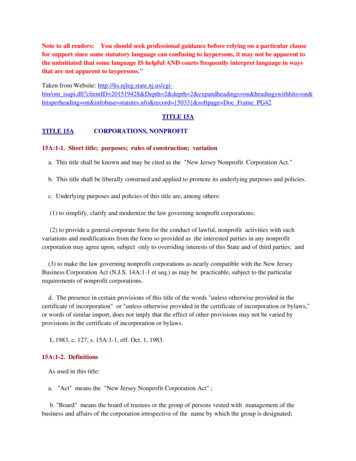
![[Code of Federal Regulations] [Title 21, Volume 8 .](/img/2/21-cfr-part-820.jpg)
